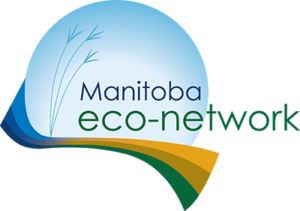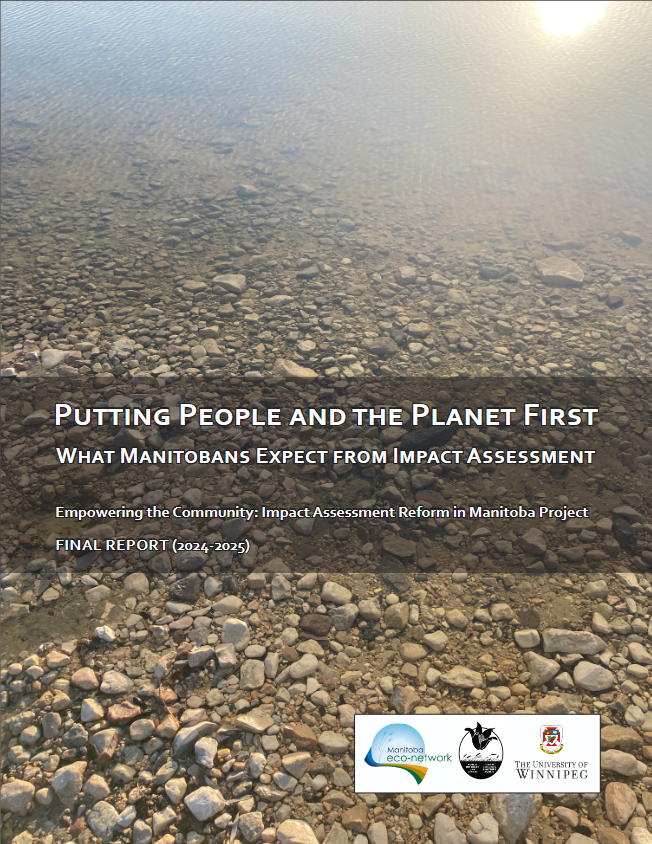Full Report
To read the full version of our report, you can access it here.
For our project slides in the presentation of our findings, read them here.
Executive Summary
Impact assessment (IA) is the primary legal tool used by government decision-makers to understand the potential consequences of proposed developments before irrevocable actions are taken. Despite near-global adoption, there is significant variability in IA in various jurisdictions, including requirements for its application (often referred to as the trigger), the scope of issues considered in an IA review, and the factors considered by decision-makers, among other characteristics of the assessment process.
Despite longstanding calls for provincial reform from many entities, the IA framework in Manitoba has not been substantially updated since its adoption in 1988. The most recent comprehensive critique of the provincial licensing process under The Environment Act was undertaken by the Manitoba Law Reform Commission (MLRC) (2015). Key MLRC reform recommendations for Manitoba’s provincial assessment process focused on updating process elements, improving transparency, expanding the range of factors considered, and increasing (mandatory) opportunities for public engagement.
Since 2015, additional recommendations about the IA process have emerged in various Clean Environment Commission (CEC) reports. Recommendations from the CEC included improving the assessment processes, through refining the procedures, scope, and consideration involved in impact assessments. CEC recommendations also included more reporting requirements and adding more mandatory considerations to IA processes, such as the need for and alternatives to the development, cumulative effects. Recommendations from the CEC also emphasized the importance of integrating Indigenous Knowledge and ensuring meaningful engagement with Indigenous Communities in IAs.
In the context of recent renewed interest from Manitobans toward reforming the IA framework in Manitoba, the Empowering Impact Assessment project is focused on gathering Manitobans’ insights on our current impact assessment process under The Environment Act and identifying community priorities for impact assessment reform.
Our research relied on multiple methods to address our purpose and
objectives. We completed background research surrounding best practices in impact assessment and produced a series of research memos. In addition, we conducted a survey of Canadian and select international IA legislation to determine what is typically included in the scope of the assessment, and the basis on which the assessment decision is made. Concurrent with the background research, we launched a public survey in March 2025 (420 started the survey; 370 completed all the questions). We held in-person workshops for the general public in Brandon, The Pas and Winnipeg; and an Experts’ workshop in June. Importantly, only 56.5% of the people who participated in our engagement activities identified as having some experience with IA.
What We Heard
We heard clearly from Manitobans that they expect the protection of
people and the environment through a robust provincial IA process, which incorporates meaningful public engagement and fosters trust. We also heard that Indigenous knowledge and Indigenous-led assessments must be enabled, recognized and respected when assessing the impacts of proposed projects.
From the results of the survey and workshops, key themes emerged that
highlight the interests and priorities of Manitobans for the provincial impact assessment process and potential improvements. This includes:
- Broadening the scope of IA by expanding the complement of potential
effects of development which are assessed - Making space for Indigenous-led assessment and traditional knowledge, as well as the inclusion of Indigenous Rights-Holders
- Enabling significantly more opportunities for public engagement
- Reforming the types of projects required to undergo IA and the process of classifying potential projects
- Improving post-approval practices, including enforcement of legal
requirements and licensing conditions, tracking and collecting additional data, independent and unbiased monitoring and reporting - Improving public trust in Manitoba’s IA process
- Ensuring the protection of people and the environment is prioritized,
even when there is political pressure to approve natural resource
developments
Other themes from the data that emerged based on participant feedback, and were supported by our research memos on evolving best practices, highlight additional reform opportunities for improving the provincial IA process. This includes updating the IA process in Manitoba such that it considers both biophysical and human impacts and takes decisions in a public and transparent manner.
Recommendations
- Engage with Indigenous Rights-Holders to Identify Meaningful
IA Reforms: in collaboration with rights holders, the Government of
Manitoba should design an engagement process to identify and develop necessary reforms to Manitoba’s IA process so it respects rights and Treaties. While rights holders will bring their own perspectives, reform options that may be considered include enabling Indigenous-led IA and making explicit provision for the inclusion of traditional knowledge in the provincial IA process. Both the designing of the engagement process and the resulting reforms that are implemented must allow for ongoing collaboration with Indigenous rights-holders - Meaningful Public Engagement to Identify Public Interests: the Government of Manitoba should engage Manitobans about their priorities for IA law reform and specific reforms being contemplated by government. This engagement should reflect best practices of meaningful public participation, in that engagement should take place early, when specific reform options are being developed, and engagement should be done in a variety of ways, including online (e.g. EngageMB supplemented by a randomized public opinion survey) and in-person (e.g. through town halls held throughout Manitoba).
- Develop and Introduce Reforms Based on the Feedback of Manitobans: This project was intended to seek general feedback from Manitobans and did not produce comprehensive legislative recommendations for reforming Manitoba’s IA process. However, there are still important insights to draw from the project data about potential reform opportunities. The key themes identified in this report provide insights on what Manitobans want with respect to improving the provincial IA process.
Acknowledgements
This article was written in Winnipeg, Manitoba. We are privileged to live and work in Treaty 1 territory, the land of Anishinaabeg, Ininew, Anishininewuk, and Dakota Peoples, and the National homeland of the Red River Métis. The water we drink comes from Treaty 3 and the power we use comes from Treaties 1 and 5. Acknowledging the land is but a small step towards reconciliation.
This project would not have been possible with the following individuals and organizations who dedicated their time, effort, and knowledge
Project Team:
Heather Fast (Manitoba Eco-Network)
Dr. Patricia Fitzpatrick (University of Winnipeg)
Katrine Dilay (Public Interest Law Centre)
James Beddome (Manitoba Eco-Network)
Research Support:
Maureen Friesen (PILC)
Pavel Shetra (PILC)
Michael Bagamery (MbEN)
Project and Workshop Support:
Michayla Carlson
Report Layout:
Scott McCullough (IUS, University of Winnipeg)
Workshop Note-Takers:
Victoria Cloutis and Jenessa Shector
French Translation Support:
Hannah Sinclair-Huberdeau (Manitoba Eco-Network)
Guy Jourdain
Funding for this project was provided by The Manitoba Law
Foundation and the Social Sciences and Humanities Research
Council (SSHRC) – Grant No. 892-2024-1048.


